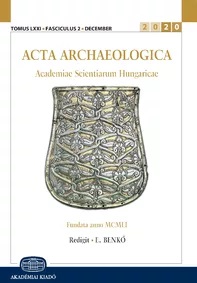Das Hügelgrab von Baláca – Zur Problematik des monumentalen Bestattungsortes
The Baláca burial mound – On the problem of the monumental burial place
Author(s): Sylvia K. PalágyiSubject(s): Archaeology, Ancient World
Published by: Akadémiai Kiadó
Keywords: Roman villa; tumulus; Roman farmyard; dromos; Roman harness
Summary/Abstract: The burial site of the owner family of a Roman villa rustica in Baláca, dating back to the 2nd century AD, is a mound grave called Likas Hill. The Earth mound, originally 10–12 m high, with a diameter of about 37 m, covering a double burial chamber and a corridor, was surrounded by a red sandstone wall with a red sandstone cornice. There were tomb altars standing on its stepped footing. The mound had been heavily disturbed over the centuries, and nothing remained of the original burial. The larger fragments of the tombstones were carried away to constructions in the surrounding villages. Until now, it has not been possible to reconstruct the tomb inscriptions remaining in situ in a reassuring way from the fragments, nor to determine the date of construction of the tomb. The two animal burials dug into the Roman age surface, the bustum of a horse and a dog are the only undisturbed set finds of the mound. Excavation observations suggest the existence of additional bustums, which, along with the animal burials, would have been contained in a burial enclosure earlier than the enclosing wall and the tomb structure.
Journal: Acta Archaeologica Academiae Scientiarum Hungaricae
- Issue Year: 73/2022
- Issue No: 1
- Page Range: 37-45
- Page Count: 9
- Language: German
- Content File-PDF

